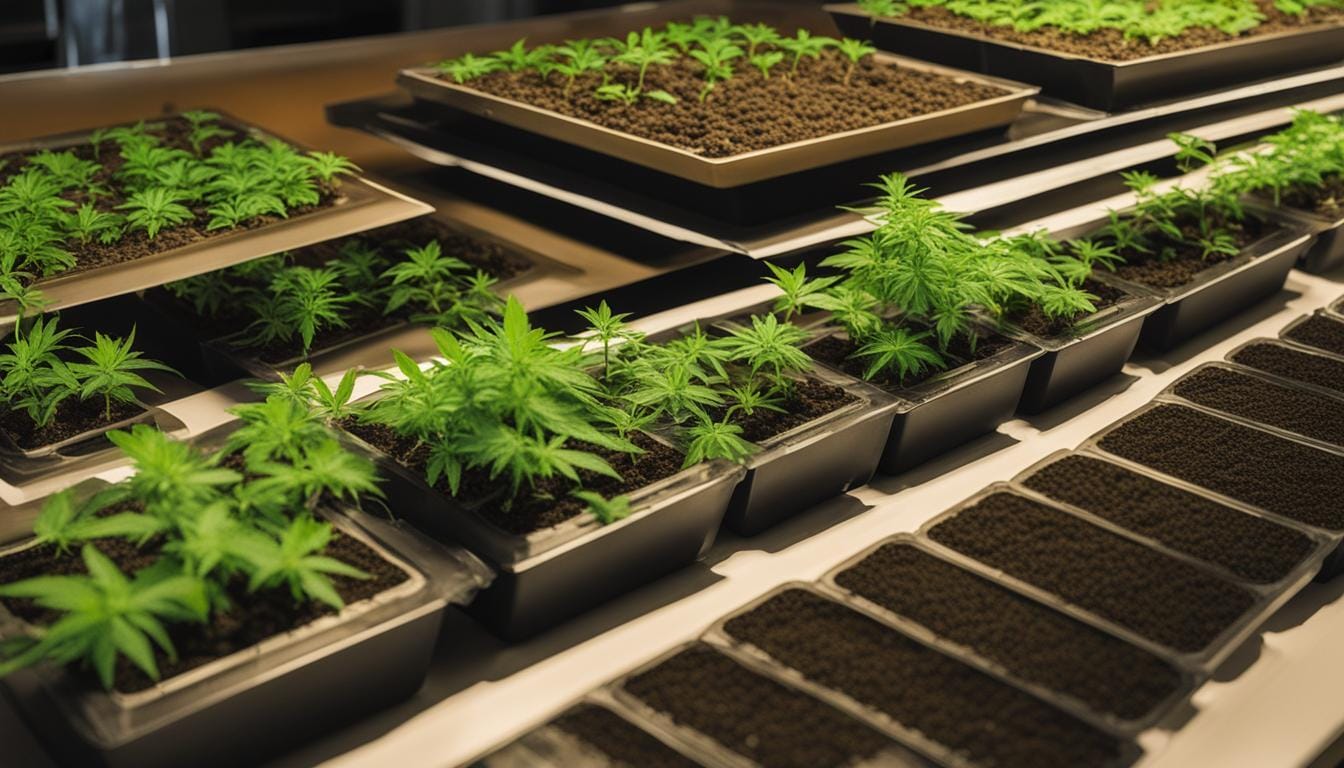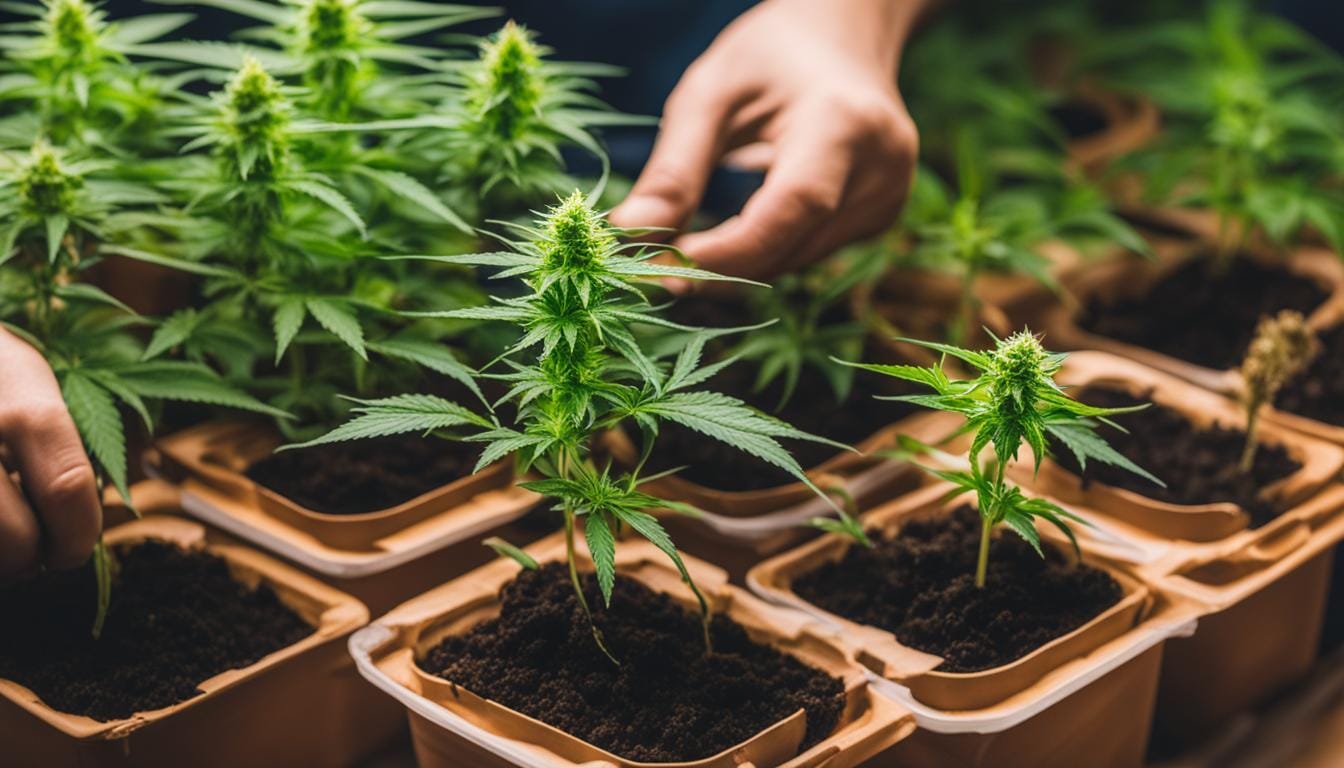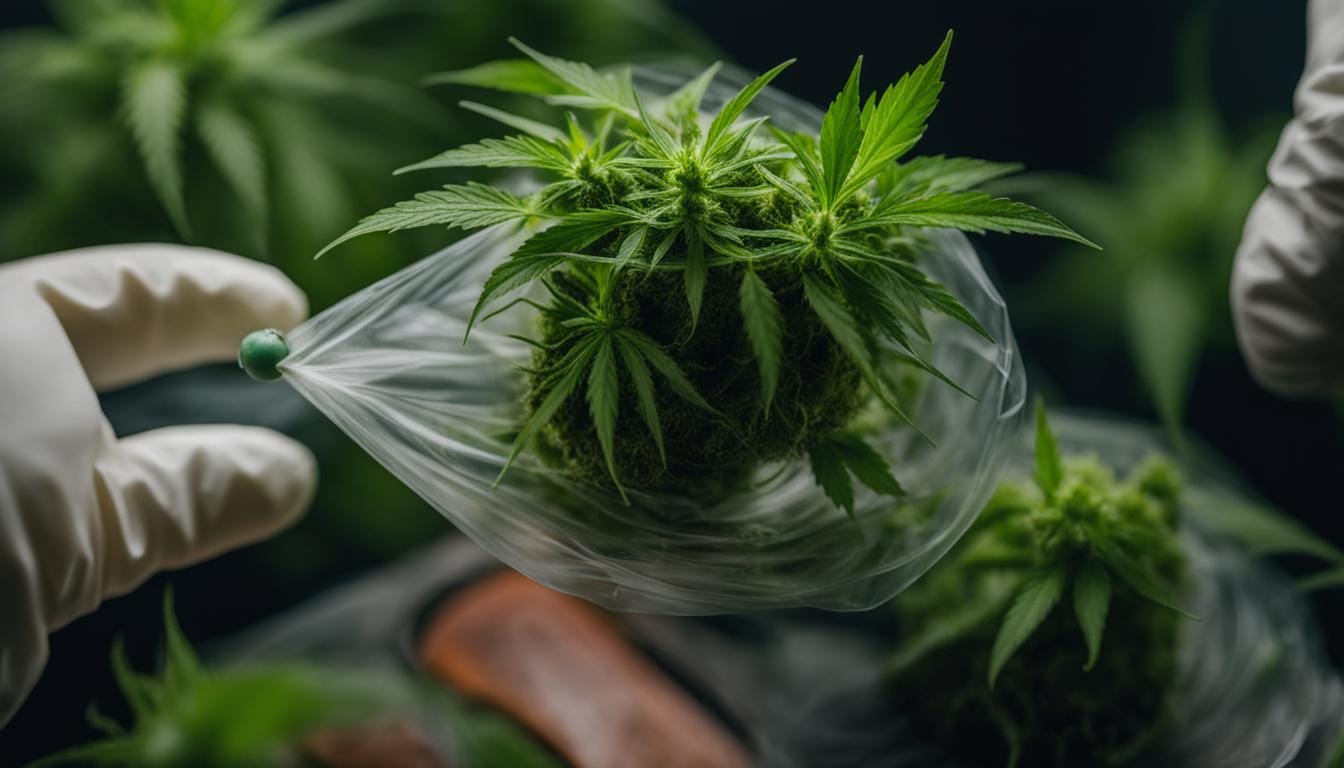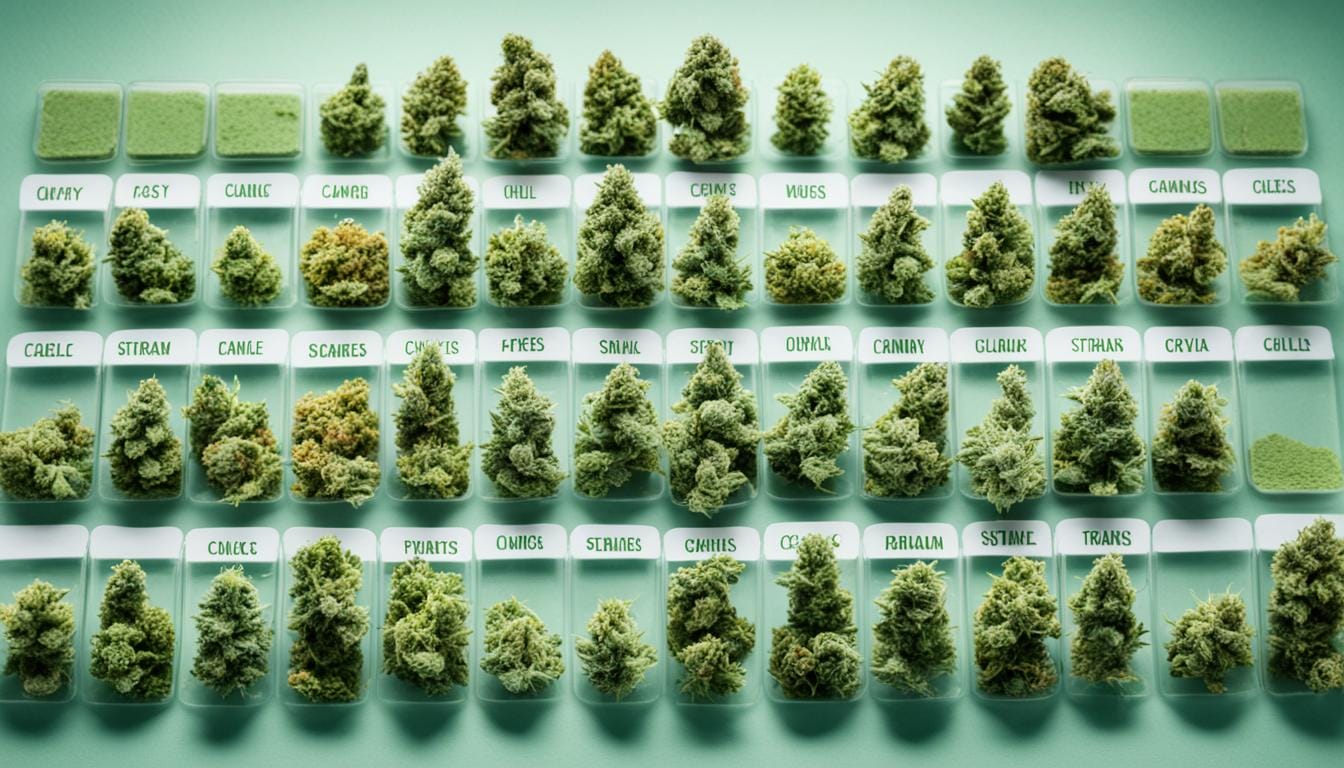Explore reputable online seed banks to buy cannabis seeds legally. Find the best sources for legal marijuana seeds with our guide.
Propagating Cannabis Plants: Exploring Cannabis Plant Propagation Techniques

Growing cannabis is an exciting and rewarding experience, but it takes skill and knowledge to achieve optimal results. One critical aspect is propagating cannabis plants, which is the process of creating new plants from existing ones. There are various cannabis propagation methods, each with its own advantages and challenges.
In this article, we will delve into the various cannabis propagation techniques used to multiply cannabis plants effectively. From cloning and tissue culture to seed germination, we will explore the best practices for propagating cannabis plants.
Key Takeaways:
- Cannabis plant propagation is the process of creating new cannabis plants from existing ones
- There are various best practices for cannabis plant techniques for propagation, including cloning, seed germination, and tissue culture
- Each cannabis propagation technique has its own advantages and challenges
- Understanding different cannabis methods of propagating cannabis plants is essential for maximizing yields and maintaining genetic diversity
- Experimenting with various propagation methods can help you find the most suitable approach for your cannabis cultivation needs
Cannabis Plant Propagation Techniques: Clones
When it comes to cannabis plant propagation, cloning is one of the most popular methods. Cloning allows you to create identical copies of a “mother” plant, ensuring that you’ll have a genetically identical crop. This method is particularly beneficial if you have a plant that produces high-quality buds. By taking a cutting from the mother plant and encouraging it to develop roots, you can have multiple plants that exhibit the same desirable traits.
Cloning is a form of vegetative propagation. It is essential to note that only female cannabis plants produce buds, so cloning from a female plant ensures a guaranteed yield.
Before you start cloning cannabis plants, you’ll need to gather some materials. These include:
- A sharp, sterile razor or blade
- Rooting hormone
- A rooting medium (such as Rockwool cubes)
- Grow lights or a warm, sunny location
Tip: It is essential to keep all equipment and growing conditions clean and sanitized during the cloning process to prevent any contamination or disease.
How To Clone Cannabis Plants
- Select a healthy “mother” plant that is at least two months old. Look for a plant with healthy leaves, stems, and roots.
- Take a cutting from the mother plant, about 4-6 inches in length, using a sharp, sterile blade. Make a clean cut just below a node (the point where a leaf meets the stem). Remove any excess foliage from the stem.
- Dip the cut end of the stem into the rooting hormone.
- Plant the stem into a rooting medium, such as Rockwool cubes. Keep the medium moist, and cover the cutting with a clear plastic dome or bag to create a humid environment.
- Place the cutting under grow lights or in a warm, sunny location. Keep the temperature between 72-78 degrees Fahrenheit.
- Monitor the cutting for growth and roots. After about 10-14 days, the roots should start to develop, and new growth will appear.
- After about three weeks, check the cutting for healthy root development. Once the roots are at least one inch long, the new plant can be transplanted into a larger container or moved outside.
Note: Cloning can be a delicate process. If done correctly, it can significantly increase your yield. However, if done incorrectly, it can lead to the death of the cutting or reduce the potential yield. Taking more than one cutting is always a good idea, so you have a higher chance of success.
If you’re new to cannabis plant propagation, cloning can be a great place to start. With the right conditions and materials, you can have multiple plants that exhibit the same desirable traits as the mother plant. Be sure to do your research and follow the cloning process carefully to ensure the best yield possible.

Seed Germination: Starting from Scratch
Germinating cannabis seeds is one of the most natural ways to start your cannabis cultivation journey. By starting from scratch with seeds, you can maintain genetic diversity and ensure a healthy crop. Here are the steps involved in seed germination for cannabis plants:
- Choose high-quality cannabis seeds from a reputable seed bank like SeedsHereNow.com
- Soak the seeds in room temperature water for 24 hours to soften the outer shell
- Place the seeds in a propagator or seedling tray filled with moist soil or Rockwool cubes
- Keep the seeds in a warm, dark location, like a closet or cupboard, until they begin to sprout
- Once the seedlings have emerged, move them to a well-lit area or under grow lights
- Water the seedlings regularly, but avoid overwatering to prevent root rot
Successful cannabis plant propagation from seeds requires careful attention to detail, but it can be a rewarding experience. By germinating seeds, you can create unique varieties and maintain genetic diversity in your cannabis garden.
Propagating Cannabis Through Tissue Culture
One of the most successful and efficient cannabis propagation methods is tissue culture. This technique involves growing cannabis plants in a controlled laboratory environment, where they can be mass-produced with desirable genetic traits.
Tissue culture propagation begins with a small piece of plant tissue, such as a leaf, stem, or root. The tissue is sterilized and placed in a nutrient-rich media, where it can grow and develop into a new plant. Because tissue culture allows for the selection of desirable genetic traits and the elimination of undesirable traits, it has become a popular propagation method for commercial cannabis cultivators.
There are several benefits of tissue culture propagation for cannabis cultivation:
- Mass-production of genetically identical plants
- Elimination of pests and diseases
- Selection of desirable genetic traits
- Reduced space requirements for cultivation
Tissue culture propagation can also allow for the production of cannabis plants that are resistant to specific pests and diseases, making them a valuable asset for commercial cultivators. Additionally, tissue culture propagation can reduce space requirements for cultivation, making it an ideal method for cultivators with limited space.
While tissue culture propagation requires advanced equipment and expertise, it has become an increasingly popular method for cannabis propagation due to its many benefits and the increasing demand for genetically consistent and disease-resistant cannabis plants.

Propagating Cannabis: Conclusion
So there you have it—a comprehensive guide to different methods of propagating cannabis plants! As a long-time cannabis grower, I have personally experimented with a variety of techniques, and I can attest to the benefits of understanding the pros and cons of each method.
By learning how to clone, germinate seeds, air layer, divide, graft, or employ tissue culture, you can effectively propagate cannabis plants and maximize yields. It’s also essential to maintain genetic diversity to ensure the long-term health of your crop.
As you continue your cultivation journey, I encourage you to experiment with different cannabis propagation methods to find the most suitable approach for your needs. Whether you’re a seasoned grower or just starting, there’s always something new to learn!
And if you’re looking for quality cannabis seeds, be sure to check out the complete collection of regular, feminized, and autoflower cannabis seeds at Seeds Here Now.
Happy propagating!
FAQ
What are the different methods of propagating cannabis plants?
The different methods of propagating cannabis plants include cloning, seed germination, and tissue culture.
How does cloning cannabis plants work?
Cloning involves taking a cutting from a healthy “mother” cannabis plant and encouraging it to develop roots and grow into a new plant.
What is seed germination?
Seed germination is the process of planting cannabis seeds and providing them with the right conditions to sprout and grow into new plants.
What is tissue culture?
Tissue culture is a propagation technique that involves growing cannabis plants in a controlled environment, such as a laboratory, for mass production of genetically identical plants.
Why is understanding different propagation methods important for cannabis cultivation?
Understanding different propagation methods is important for maximizing yields and maintaining genetic diversity in cannabis cultivation.
Back





